 W
WSir Frank Ezra Adcock, was a British classical historian who was Professor of Ancient History at the University of Cambridge between 1925 and 1951. In addition to his academic work, he also served as a cryptographer in both World War I and World War II.
 W
WAlexander Craig "Alec" Aitken was one of New Zealand's most eminent mathematicians. In a 1935 paper he introduced the concept of generalized least squares, along with now standard vector/matrix notation for the linear regression model. Another influential paper co-authored with his student Harold Silverstone established the lower bound on the variance of an estimator, now known as Cramér–Rao bound. He was elected to the Royal Society of Literature for his World War I memoir, Gallipoli to the Somme.
 W
WConel Hugh O'Donel Alexander, known as Hugh Alexander and C. H. O'D. Alexander as a pen name, was an Irish-born British cryptanalyst, chess player, and chess writer. He worked on the German Enigma machine at Bletchley Park during the Second World War, and was later the head of the cryptanalysis division at GCHQ for 25 years. In chess, he was twice British chess champion and earned the title of International Master.
 W
WPeter Benenson was a British lawyer, human rights activist and the founder of human rights group Amnesty International (AI). Benenson refused all honours but in his 80s, largely to please his family, he accepted the Pride of Britain Award for Lifetime Achievement in 2001.
 W
WSusan Elizabeth Black is a British computer scientist, academic and social entrepreneur. She has been instrumental in saving Bletchley Park, the site of World War II codebreaking, with her Saving Bletchley Park campaign. Since 2018, she has been Professor of Computer Science and Technology Evangelist at Durham University. She was previously based at the University of Westminster and University College London.
 W
WEdward Charles Gurney Boyle, Baron Boyle of Handsworth, was a British Conservative Party politician and Vice-Chancellor of the University of Leeds.
 W
WCharles Orwell Brasch was a New Zealand poet, literary editor and arts patron. He was the founding editor of the literary journal Landfall, and through his 20 years of editing the journal, had a significant impact on the development of a literary and artistic culture in New Zealand. His poetry continues to be published in anthologies today, and he provided substantial philanthropic support to the arts in New Zealand, including by establishing the Robert Burns Fellowship, the Frances Hodgkins Fellowship and the Mozart Fellowship at the University of Otago, by providing financial support to New Zealand writers and artists during his lifetime, and by bequeathing his extensive collection of books and artwork in his will to the Hocken Library and the University of Otago.
 W
WAsa Briggs, Baron Briggs was an English historian. He was a leading specialist on the Victorian era, and the foremost historian of broadcasting in Britain. Briggs achieved international recognition during his long and prolific career for examining various aspects of modern British history. He was made a life peer in 1976.
 W
WIrene Jessie "Mouse" Brown was an author and codebreaker who worked at Bletchley Park in Buckinghamshire in Hut 6 during the Second World War. She was employed as a linguist and translator working in the Registration Room and the main Decoding Room.
 W
WWilliam Putnam "Bill" Bundy was an American attorney and intelligence expert, an analyst with the CIA. Bundy served as a foreign affairs advisor to both presidents John F. Kennedy and Lyndon B. Johnson. He had key roles in planning the Vietnam War, serving as deputy to Paul Nitze under Kennedy and as Assistant Secretary of State for East Asian and Pacific affairs under Johnson.
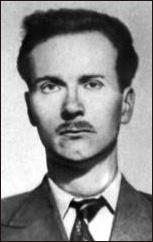 W
WJohn Cairncross was a British civil servant who became an intelligence officer and spy during the Second World War. As a Soviet double agent, he passed to the Soviet Union the raw Tunny decryptions that influenced the Battle of Kursk. He was alleged to be the fifth member of the Cambridge Five. He is also notable as a translator and writer of non-fiction.
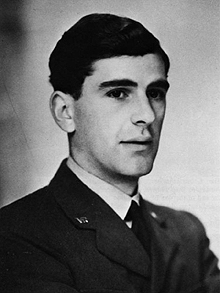 W
WPeter John Ambrose Calvocoressi was a British lawyer, Liberal politician, historian, and publisher. He served as an intelligence officer at Bletchley Park during World War II.
 W
WJoan Elisabeth Lowther Murray, MBE was an English cryptanalyst and numismatist best known for her work as a code-breaker at Bletchley Park during the Second World War. Although she did not personally seek the spotlight, her role in the Enigma project that decrypted Nazi Germany's secret communications earned her awards and citations, such as appointment as a Member of the Order of the British Empire (MBE), in 1946.
 W
WNakdimon Shabbethay Doniach was a British civil servant, lexicographer and scholar of Judaic and Semitic languages.
 W
WDorothy Du Boisson, MBE was a code breaker stationed at Bletchley Park during World War II.
 W
WAntony Garrard Newton Flew was an English philosopher. Belonging to the analytic and evidentialist schools of thought, Flew was most notable for his work related to the philosophy of religion. During the course of his career he taught at the universities of Oxford, Aberdeen, Keele and Reading, and at York University in Toronto.
 W
WThomas Harold Flowers, BSc, DSc, OBE was an English engineer with the British General Post Office. During World War II, Flowers designed and built Colossus, the world's first programmable electronic computer, to help solve encrypted German messages.
 W
WHarry Golombek OBE was a British chess player, chess author, and wartime codebreaker. He was three times British chess champion, in 1947, 1949, and 1955 and finished second in 1948.
 W
WIrving John Good was a British mathematician who worked as a cryptologist at Bletchley Park with Alan Turing. After the Second World War, Good continued to work with Turing on the design of computers and Bayesian statistics at the University of Manchester. Good moved to the United States where he was professor at Virginia Tech.
 W
WJames Alexander "Sandy" Green FRS was a mathematician and Professor at the Mathematics Institute at the University of Warwick, who worked in the field of representation theory.
 W
WJoel Greenberg is an educational technology consultant and historian on the role of Bletchley Park in World War Two.
 W
WSimon Greenish is a British Chartered Civil Engineer and museum director.
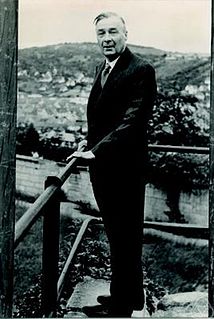 W
WPhilip Hall FRS, was an English mathematician. His major work was on group theory, notably on finite groups and solvable groups.
 W
WHerbert Lionel Adolphus Hart, usually cited as H. L. A. Hart, was a British legal philosopher, and a major figure in political and legal philosophy. He was Professor of Jurisprudence at Oxford University and the Principal of Brasenose College, Oxford. His most famous work is The Concept of Law, which has been hailed as "the most important work of legal philosophy written in the twentieth century". He is considered one of the world's foremost legal philosophers in the twentieth century, alongside Hans Kelsen.
 W
WFrederick Whiley "Ted" Hilles (1900–1975) was Bodman Professor of English Literature at Yale University. He was a noted authority on the literary career of Sir Joshua Reynolds and edited the 1929 edition of Reynolds letters that was published by Cambridge University Press. During the Second World War he worked in intelligence for the U.S. Army at Bletchley Park in England.
 W
WPeter John Hilton was a British mathematician, noted for his contributions to homotopy theory and for code-breaking during the Second World War.
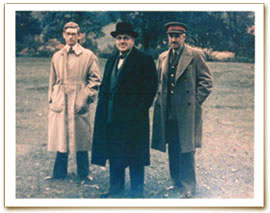 W
WSir Francis Harry Hinsley OBE was an English historian and cryptanalyst. He worked at Bletchley Park during the Second World War and wrote widely on the history of international relations and British Intelligence during the Second World War. He was known as Harry Hinsley.
 W
WDorothy Hyson, Lady Quayle was a successful American film and stage actress who worked largely in England. During World War II, she worked as a cryptographer at Bletchley Park.
 W
WJohn Robert Fisher Jeffreys was a British mathematician and World War II codebreaker.
 W
WDaniel Jenkyn Jones was a Welsh composer of classical music, who worked in Britain. He used both serial and tonal techniques. He is best known for his quartets and thirteen symphonies and for his song settings for Dylan Thomas's play, Under Milk Wood.
 W
WFrank Laurence Lucas OBE was an English classical scholar, literary critic, poet, novelist, playwright, political polemicist, Fellow of King's College, Cambridge, and intelligence officer at Bletchley Park during World War II.
 W
WMajor General Sir Stewart Graham Menzies, was Chief of MI6, the British Secret Intelligence Service (SIS), from 1939 to 1952, during and after the Second World War.
 W
WDonald Michie was a British researcher in artificial intelligence. During World War II, Michie worked for the Government Code and Cypher School at Bletchley Park, contributing to the effort to solve "Tunny", a German teleprinter cipher.
 W
WSir Philip Stuart Milner-Barry was a British chess player, chess writer, World War II codebreaker and civil servant. He represented England in chess both before and after World War II. He worked at Bletchley Park during World War II, and was head of "Hut 6", a section responsible for deciphering messages which had been encrypted using the German Enigma machine. He was one of four leading codebreakers at Bletchley to petition the then-Prime Minister Winston Churchill directly for more resources for their work. After the war he worked in the Treasury, and later administered the British honours system. In chess, he represented England in international tournaments, and lent his name to four opening variations.
 W
WSir James Ramsay Montagu Butler, was a British politician and academic. He was a member of parliament for Cambridge University from 1922 to 1923. He was Regius Professor of Modern History at the University of Cambridge from 1947 to 1954, and Vice-Master of Trinity College, Cambridge from 1954 to 1960. He also saw military service during both the First and Second World Wars.
 W
WRolf Noskwith was a British businessman who during the Second World War worked under Alan Turing as a cryptographer at the Bletchley Park British military base.
 W
WCaptain Raymond C. "Jerry" Roberts, MBE was a British wartime codebreaker and businessman. During the Second World War, Roberts worked at the Government Code and Cypher School (GC&CS) at Bletchley Park from 1941-45. He was a leading codebreaker and linguist, who worked on the Lorenz cipher system — Hitler's most top-level code.
 W
WAnthony Edgar "Tony" Sale, FBCS was a British electronic engineer, computer programmer, computer hardware engineer, and historian of computing. He led the construction of a fully functional Mark 2 Colossus computer between 1993 and 2008. The rebuild is exhibited at The National Museum of Computing at Bletchley Park in England.
 W
WMercy Seiradaki was a British archaeologist who worked in Crete in the 1930s, mostly on projects led by John Pendlebury, including excavations at Knossos. She co-authored several reports on the work undertaken with him and published a later key text on the pottery from Karphi in 1960. During the war she worked at Bletchley Park, and then joined the Red Cross. She worked with the United Nations Relief and Rehabilitation Administration (UNRRA) in Crete in the post-war years and lived in Greece for the rest of her life.
 W
WThe Far East Combined Bureau, an outstation of the British Government Code and Cypher School, was set up in Hong Kong in March 1935, to monitor Japanese, and also Chinese and Russian (Soviet) intelligence and radio traffic. Later it moved to Singapore, Colombo (Ceylon), Kilindini (Kenya), then returned to Colombo.
 W
WEdward Hugh Simpson CB was a British codebreaker, statistician and civil servant. He was best-known for describing Simpson's paradox along with Udny Yule.
 W
WAdmiral Sir Hugh Francis Paget Sinclair,, known as Quex Sinclair, was a British intelligence officer. Between 1919 and 1921, After World War I, he was Director of British Naval Intelligence, and he helped to set up the Secret Intelligence Service before World War II.
 W
WOliver Strachey CBE, a British civil servant in the Foreign Office, was a cryptographer from World War I to World War II.
 W
WBrigadier John Hessell Tiltman, was a British Army officer who worked in intelligence, often at or with the Government Code and Cypher School (GC&CS) starting in the 1920s. His intelligence work was largely connected with cryptography, and he showed exceptional skill at cryptanalysis. His work in association with Bill Tutte on the cryptanalysis of the Lorenz cipher, the German teleprinter cipher, called "Tunny" at Bletchley Park, led to breakthroughs in attack methods on the code, without a computer. It was to exploit those methods, at extremely high speed with great reliability, that Colossus, the first digital programmable electronic computer, was designed and built.
 W
WSir Edward Wilfred Harry Travis was a British cryptographer and intelligence officer, becoming the operational head of Bletchley Park during World War II, and later the head of GCHQ.
 W
WJean Alys Barker, Baroness Trumpington, Royal Victorian Order,, was an English Conservative Party politician who in the 1960s and 70s served in local government in Cambridgeshire, and in 1980 was created a life peer after which she served in the House of Lords. From an upper-class background, she was a socialite for many years before entering politics.
 W
WAlan Mathison Turing was an English mathematician, computer scientist, logician, cryptanalyst, philosopher, and theoretical biologist. Turing was highly influential in the development of theoretical computer science, providing a formalisation of the concepts of algorithm and computation with the Turing machine, which can be considered a model of a general-purpose computer. Turing is widely considered to be the father of theoretical computer science and artificial intelligence. Despite these accomplishments, he was never fully recognised in his home country during his lifetime due to the prevalence of homophobia at the time and because much of his work was covered by the Official Secrets Act.
 W
WWilliam Thomas Tutte OC FRS FRSC was a British-born Canadian codebreaker and mathematician. During the Second World War, he made a brilliant and fundamental advance in cryptanalysis of the Lorenz cipher, a major Nazi German cipher system which was used for top-secret communications within the Wehrmacht High Command. The high-level, strategic nature of the intelligence obtained from Tutte's crucial breakthrough, in the bulk decrypting of Lorenz-enciphered messages specifically, contributed greatly, and perhaps even decisively, to the defeat of Nazi Germany. He also had a number of significant mathematical accomplishments, including foundation work in the fields of graph theory and matroid theory.
 W
WJean Millar Valentine, later Jean Millar Rooke was an operator of the bombe decryption device in Hut 11 at Bletchley Park in England, designed by Alan Turing and others during World War II. She was a member of the "Wrens".
 W
WMajor Neil Leslie Webster was a British Army officer, who worked in intelligence in World War II. He was a key figure in radio intelligence and cryptography who worked in the Fusion Room at Bletchley Park and was closely involved in the hunt for "cribs" for the Enigma machine. Before the war he worked as a literary agent and after it as a civil servant for the Central Office of Information.
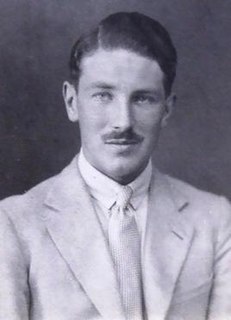 W
WWilliam Gordon Welchman was a British-American mathematician. During World War II, he worked at Britain's secret codebreaking centre, "Station X" at Bletchley Park, where he was one of the most important contributors. After the war he moved to the US, and worked on the design of military communications systems.
 W
WJohn Henry Constantine Whitehead FRS, known as Henry, was a British mathematician and was one of the founders of homotopy theory. He was born in Chennai, in India, and died in Princeton, New Jersey, in 1960.
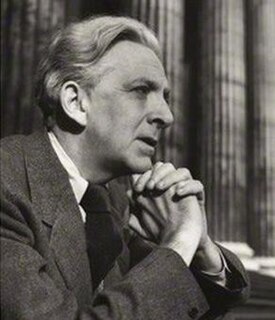 W
WSir Angus Frank Johnstone-Wilson, CBE was an English novelist and short story writer. He was one of England's first openly gay authors. He was awarded the 1958 James Tait Black Memorial Prize for The Middle Age of Mrs Eliot and later received a knighthood for his services to literature.
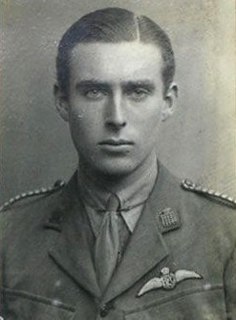 W
WFrederick William Winterbotham was a British Royal Air Force officer who during World War II supervised the distribution of Ultra intelligence. His book The Ultra Secret was the first popular account of Ultra to be published in Britain.
 W
WShaun Wylie was a British mathematician and World War II codebreaker.
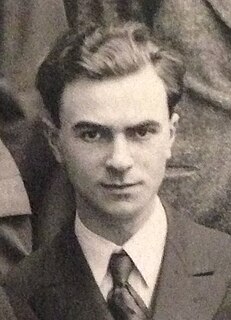 W
WCharles Eryl Wynn-Williams, was a Welsh physicist, noted for his research on electronic instrumentation for use in nuclear physics. His work on the scale-of-two counter contributed to the development of the modern computer.